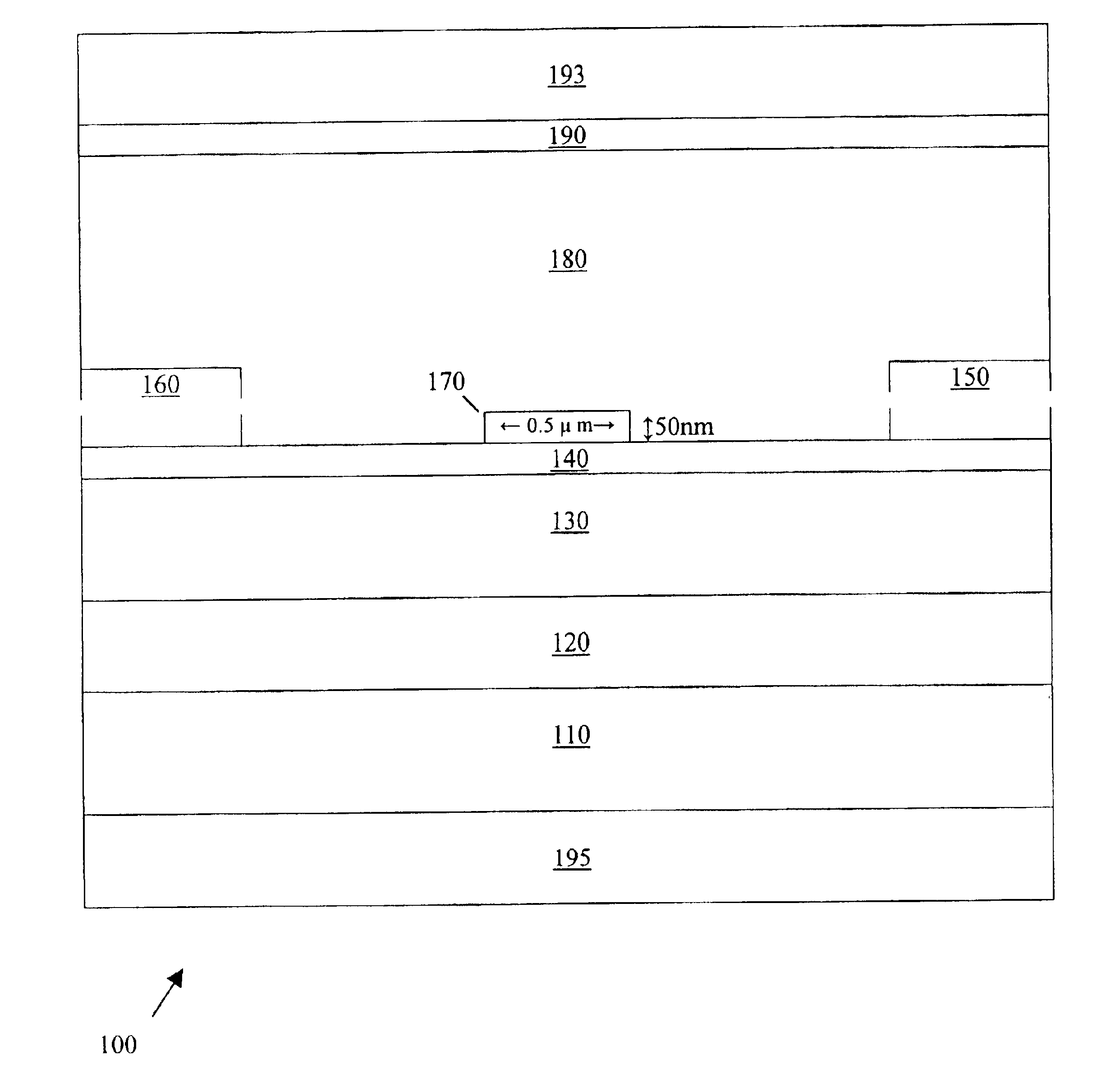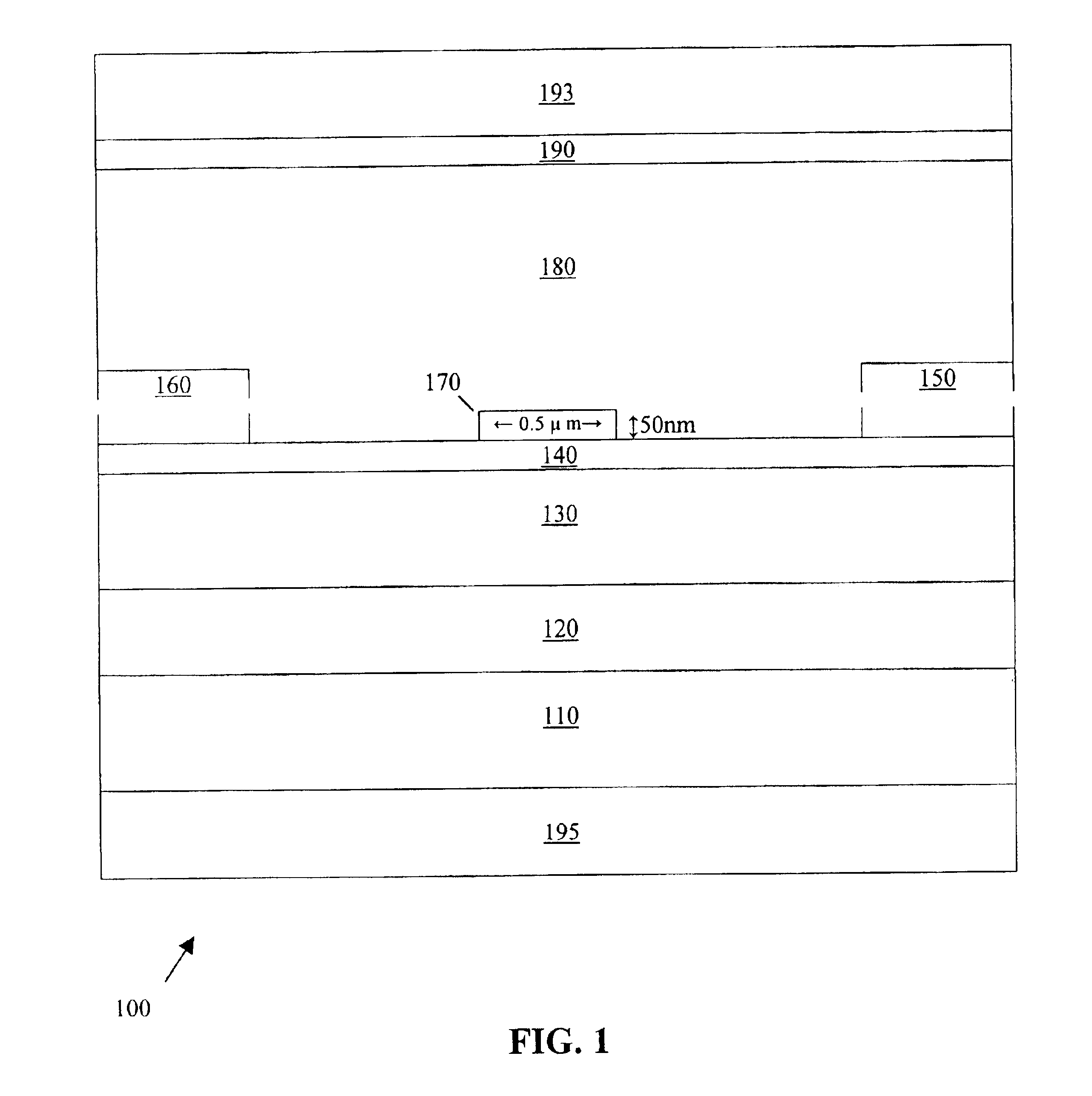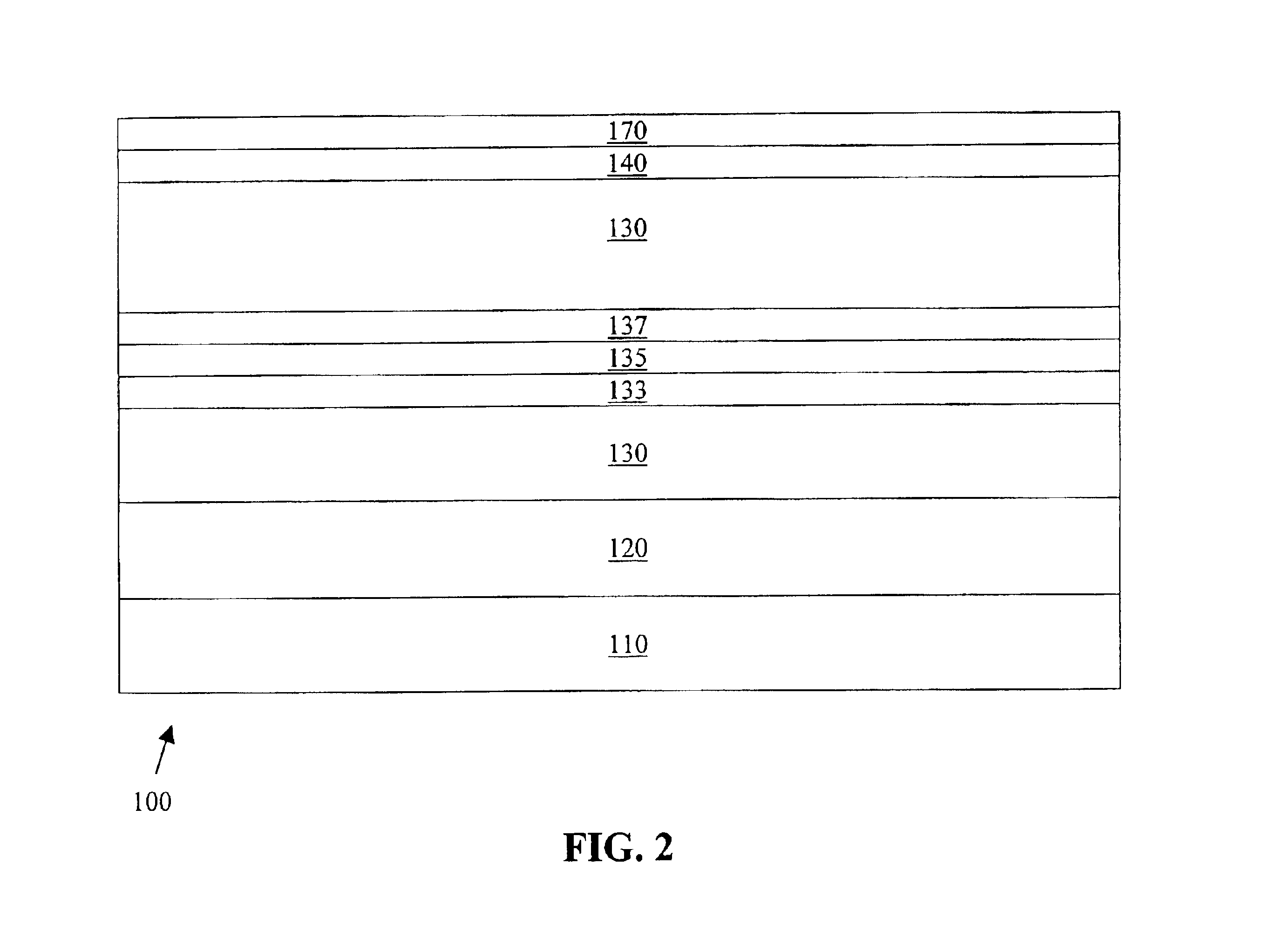Narrow lateral waveguide laser
a laser and narrow waveguide technology, applied in lasers, semiconductor devices, semiconductor lasers, etc., can solve the problems of large size and power levels that are not suitable for some applications, and the gain-guided laser diodes have strong instabilities, etc., to achieve the effect of low optical power density and easy growth
- Summary
- Abstract
- Description
- Claims
- Application Information
AI Technical Summary
Benefits of technology
Problems solved by technology
Method used
Image
Examples
Embodiment Construction
In the following description, for purposes of explanation, numerous specific details are set forth to provide a thorough understanding of exemplary embodiments of the invention. It will be evident, however, to one skilled in the art that the invention may be practiced without these specific details. In other instances, structures and devices are shown in diagram form to facilitate description of the exemplary embodiments.
Exemplary embodiments of an edge-emitting semiconductor laser incorporating a narrow waveguide design and a method of making the same are disclosed herein. The narrow waveguide expands the lateral mode size, creating a large modal spot size and ensuring higher-order modes are beyond cutoff. Separate current confinement allows the current injection region to match the mode size. The resulting device exhibits single-mode operation with a large spot-size to high output powers.
The laser of the present invention is well suited for coupling to single mode optical fibers, ...
PUM
 Login to View More
Login to View More Abstract
Description
Claims
Application Information
 Login to View More
Login to View More - R&D
- Intellectual Property
- Life Sciences
- Materials
- Tech Scout
- Unparalleled Data Quality
- Higher Quality Content
- 60% Fewer Hallucinations
Browse by: Latest US Patents, China's latest patents, Technical Efficacy Thesaurus, Application Domain, Technology Topic, Popular Technical Reports.
© 2025 PatSnap. All rights reserved.Legal|Privacy policy|Modern Slavery Act Transparency Statement|Sitemap|About US| Contact US: help@patsnap.com



